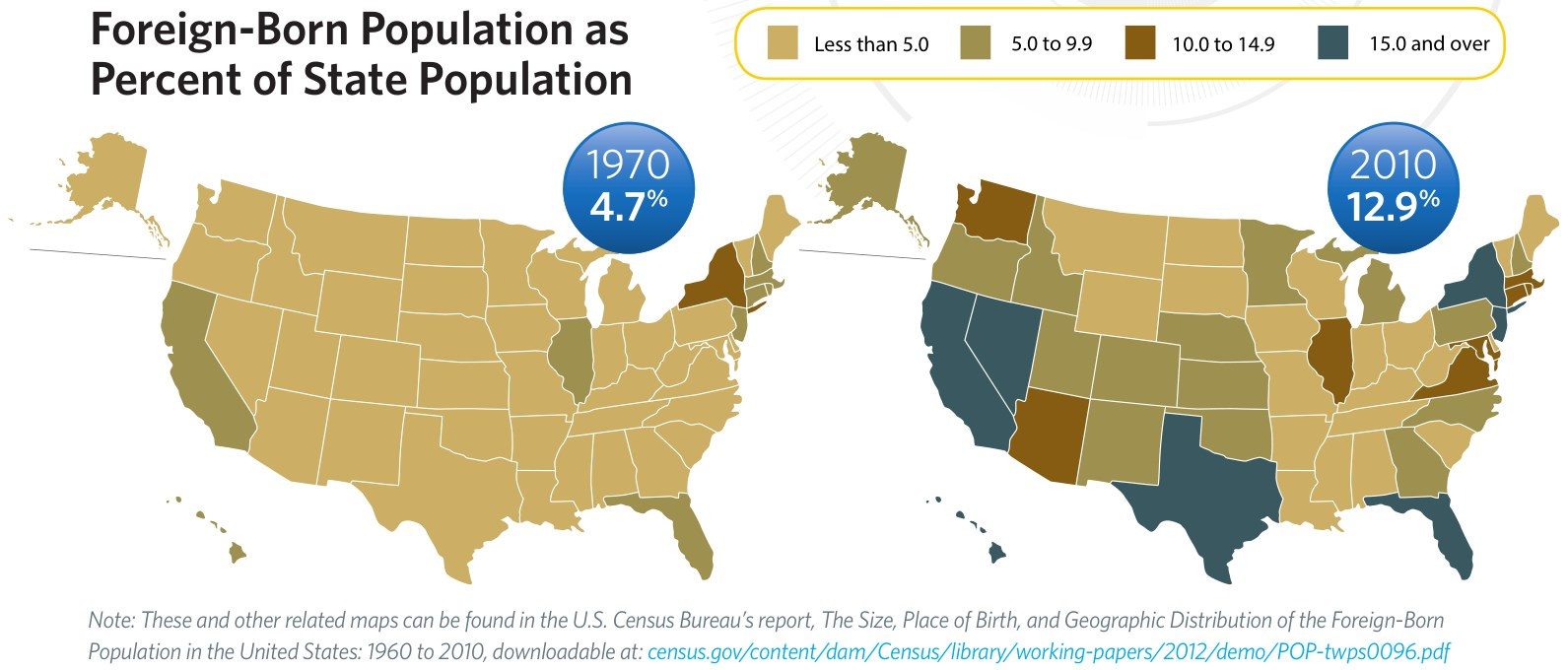The United States is the world’s hotspot for incoming migration. According to the United Nations Population Division, as of 2013, 45.8 million people living in the U.S. were born in other countries. In contrast, second-ranked Russia’s immigrant population is 11.1 million, less than a quarter that of the U.S. The Migration Policy Institute says the U.S. is home to roughly one fifth of the world’s immigrants.
Nationalities change
Throughout U.S. history, waves of immigration have shifted from one country to another. For much of the twentieth century, various European countries were the original home of most immigrants. As recently as 1960, three out of four had been born in Europe and almost another 10 percent from Canada.
By 1980, only 39 percent of immigrants came from Europe; the majority originated from Latin America or Asia. In the 2010 census, over half came from Latin America, primarily Mexico, and over a quarter from Asian countries. Immigrants originating in Europe and Canada made up less than 15 percent of the general immigrant population.
Geographic dispersion
The change in nationalities has affected regions of the U.S. in different ways. In 1970, over two-thirds of U.S. immigrants lived in the Northeast and Midwest. They were predominantly Europeans who relocated in the first half of the century, primarily represented by Italians, Germans, Polish and the British.
By 2010, over two-thirds of immigrants were located in the West and the South. People from Mexico and other parts of Latin America, and people from Asia, moved through gateway states like California, Texas, Florida and New York.
Looking forward
With historical U.S. immigration trends edging upward, and U.S. policy shifting towards a more favorable immigration environment, it’s fair to assume that immigrant communities will play a growing role in the U.S. housing market. It’s a trend that signals significant opportunities for global real estate practitioners.














